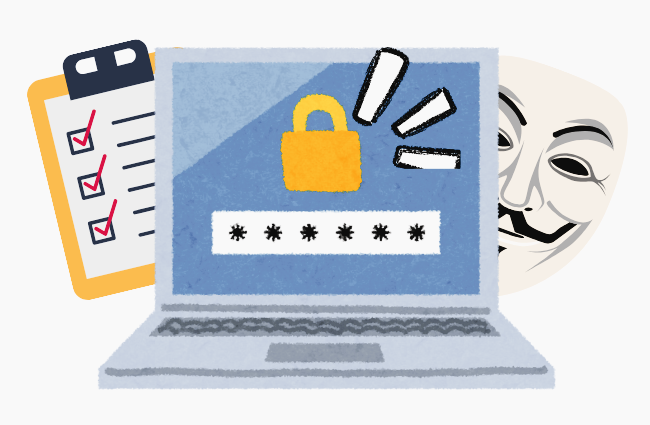Day-11 Brute Force Attack
What is brute Force attack?
Imagine trying to open a locked door without a key. You could randomly try different keys until you find the right one. That’s essentially what a brute force attack is in the digital world. Hackers systematically guess passwords, encryption keys, or other sensitive data to gain unauthorized access to systems or networks.
How they work? 🧑🏭
Attackers use automated tools to generate countless combinations of characters and try them against a target system. They might start with common passwords, personal information, or even dictionary words. If they’re lucky, they’ll eventually hit the jackpot.
What they can be used for?
Brute force attacks can be used to:
- Crack passwords: Gain access to accounts on websites, social media platforms, or even corporate networks.
- Decrypt data: Unlock encrypted files or communications.
- Compromise systems: Gain control of servers, routers, or other devices.
The consequences 💀
Brute force attacks can lead to:
- Data theft: Hackers can steal personal information, financial data, or intellectual property.
- Identity theft: Stolen credentials can be used to impersonate individuals or businesses.
- Financial loss: Companies may incur significant costs due to data breaches, lost revenue, and legal expenses.
- Reputation damage: A successful brute force attack can tarnish a company’s reputation and erode customer trust.
Some real-life examples of brute force attacks include:
- T-Mobile data breachIn 2021, a hacker used brute force attacks to gain access to T-Mobile’s servers, exposing the personal information of around 40 million customers.
- Dunkin’ DonutsIn 2015, hackers used brute force attacks to access about 19,715 user accounts at the coffee franchise within five days.
- AlibabaIn 2016, the popular e-commerce platform was the victim of a brute force attack.
- MagentoIn 2018, the popular e-commerce platform was the victim of a brute force attack that compromised its admin panels.
- Northern Irish ParliamentIn 2018, a brute force attack compromised the accounts of members of the Northern Irish Parliament.
Brute force attacks can be carried out in a number of ways, including:
- Simple Brute Force attack
- A simple brute force attack occurs when a hacker attempts to guess a user’s login credentials manually without using any software. This is typically through standard password combinations or personal identification number (PIN) codes.
Dictionary attack
- A Dictionary Attack is an attack vector used by the attacker to break in a system, which is password protected, by putting technically every word in a dictionary as a form of password for that system. This attack vector is a form of Brute Force Attack.
- The dictionary can contain words from an English dictionary and also some leaked list of commonly used passwords and when combined with common character replacing with numbers, can sometimes be very effective and fast.
- Basically, it is trying every single word that is already prepared. It is done using automated tools that try all the possible words in the dictionary.
Difference between Brute Force and Dictionary Attack:
The difference with brute force attack is that, in brute force, a large number of possible key permutations are checked whereas, in the dictionary attack, only the words with most possibilities of success are checked and are less time consuming than brute force.
Credential stuffing
Credential stuffing is a cyberattack where criminals use stolen login credentials to gain access to accounts on multiple sites. It’s one of the most common and effective cyberattacks.
Here’s how credential stuffing works:
- Steal credentials: Attackers steal login credentials through data breaches or buy them on the dark web.
- Use automated bots: Attackers use bots to make many login attempts in a short period of time on many sites.
- Gain access: If an attempt is successful, the attacker can access the account.
Attackers may use stolen credentials for a variety of purposes, including:
- Draining the account of money or making purchases
- Accessing sensitive information like credit card numbers, private messages, and documents
- Sending phishing messages or spam
- Selling the account access to other attackers
Credential stuffing attacks can be difficult to detect because the login credentials are real and the source of the login attempt can be disguised
Hybrid brute force attack
This attack combines a dictionary attack with a simple brute force attack.
How to protect yourself from this attacks?
- Strong Passwords: Use long, complex passwords that are difficult to guess. Avoid using easily guessable information like birthdays or pet names.
- Multi-Factor Authentication (MFA): Add an extra layer of security by requiring a second form of verification, such as a code sent to your phone or a biometric scan.
- Stay Vigilant: Be wary of phishing attempts and avoid clicking on suspicious links or downloading attachments from unknown sources.
Common tools for brute force attack 🔨
- Hydra: A versatile password cracking tool that supports various protocols.
- Hashcat: A high-performance password recovery tool known for its speed.
- John the Ripper: A classic password cracking tool with a long history.
Remember: While brute force attacks can be a serious threat, taking proactive measures can significantly reduce your risk.

